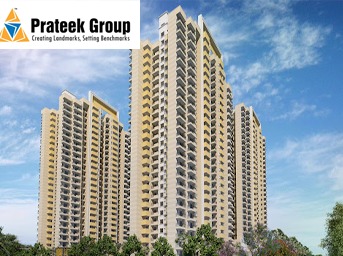AI-driven predictive maintenance is the newest digital frontier in Real Estate
By Bricksnwall | 2023-10-14

The real
estate industry is no exception to how quickly technology is advancing
throughout all aspects of human life. The real estate industry has adopted
AI-powered data analytics in the face of high-stakes situations and constantly
shifting market conditions. This adoption helps investors identify new market
trends and choose wisely among viable real estate investment options.
Furthermore, a new era of property maintenance procedures has begun as a result
of the fusion of IoT technology with predictive analytics. Predictive analytics
powered by AI is becoming a key component of real estate asset management,
maintenance procedures, and energy efficiency improvement. Predictive
maintenance, which is based on data modeling and machine learning, provides
operational excellence by quickly identifying any atypical maintenance
requirements inside a structure.
To preserve
the very foundation of smart buildings and lead India's green real estate
revolution, predictive maintenance is essential.
Traditional
Maintenance Challenges
In many
buildings, maintenance issues are pervasive and frequently treated haphazardly
using traditional standards. This traditional method results in protracted
repair times, rising maintenance costs, and disruptions that make tenants
unhappy. By embracing predictive maintenance, building owners and stakeholders
can be better equipped to stop anomalies before they get worse. Predictive
analytics, made possible by IoT and smart devices, combines complex algorithms
with vital data insights to provide real-time updates on all building
activities.
How
does technology function?
Before
understanding a technology's impact, it is crucial to understand how it
operates. The combination of machine learning algorithms, data sets, and
computational models is the foundation of AI-driven predictive analytics. This
sensor-enabled, data-driven system collects real-time data from a variety of
sources, including HVAC systems, electrical grids, plumbing systems, and other
building components. Smart sensors with IoT capabilities use the vast amounts
of data produced by various sources to examine trends and potential problems.
Once abnormalities are located, these insights enable the necessary parties to
address and resolve problems right away. Building owners, facility managers,
and other interested parties can now independently monitor the performance of
their equipment and structural elements, which enables more efficient
maintenance procedures by means of proactive notifications.
What
advantages are there?
Any
building's life energy must be maintained in order to remain functional. By
extending the lifespan of structural components through regular insights on
repairs and other rectifications, predictive maintenance extends the useful
life of building assets. It also lessens the need for rash replacements.
Additionally, data-driven insights provide a check on the performance of the
building, assisting owners and buyers in making wiser decisions about the
management of their properties and upcoming investments. Well-maintained homes
that draw and keep tenants are ensured through AI-driven upkeep. Increasing
consumer happiness results from improving the experience.
A move in
the direction of a greener future is predictive analytics. By identifying
patterns and routine functions, it improves energy efficiency by providing
regular input on building activity. The HVAC system can change lighting and
cooling in accordance with usage thanks to the feedback, which lowers energy
use and utility costs. Buildings can successfully minimize their carbon
footprint thanks to this.
Approach
to Implementation
Predictive
maintenance implementation requires expertise and resources. The return on
investment, however, exceeds the initial outlay of money. Owners of property
can establish the groundwork for a smart building by using the following
method:
Setting the
foundation requires thorough planning as the first stage. Predictive analytics
requirements will vary depending on the organization's business objectives.
For instance, while some businesses might seek to improve workplace ergonomics,
others would prefer to focus on lowering their carbon footprint. Knowing what
predictive maintenance can do to help would be helpful.
The
following crucial step is making the appropriate software investment. It takes
the right infrastructure to support predictive analytics. For real-time
monitoring, it necessitates the integration of IoT-based sensors, HVAC systems,
and other structural components.
The
buildings must also be serviced by qualified personnel because
software-generated insights must be understood and turned into usable products.
When deploying
any new technology, it is imperative to proceed with caution. The executive
stakeholders must be aware that environmental fluctuations can affect accuracy
even with predictive AI. Additionally, building owners must assess the
scalability of predictive technology integration with current systems and
future plans. Systems must be compatible with one another for improved
maintenance operations, which are made possible by data-driven insights.
The
Next Steps
Predictive maintenance technology has the ability to fundamentally alter the real estate sector, there is no doubt about that. AI-driven prediction systems will be shaped by new sensor and IoT research. Additionally, data integration will improve prediction capacities, enabling anomaly identification as well as providing practical remedies. The continual development of the digital infrastructure will help AI and other technologies develop and adapt over time. Predictive technology will undoubtedly be able to evaluate data patterns more efficiently with the help of infrastructure improvements, providing property managers with better recommendations. Organizations will need to use new technologies, but they must do so while adhering to data governance and cybersecurity guidelines.




